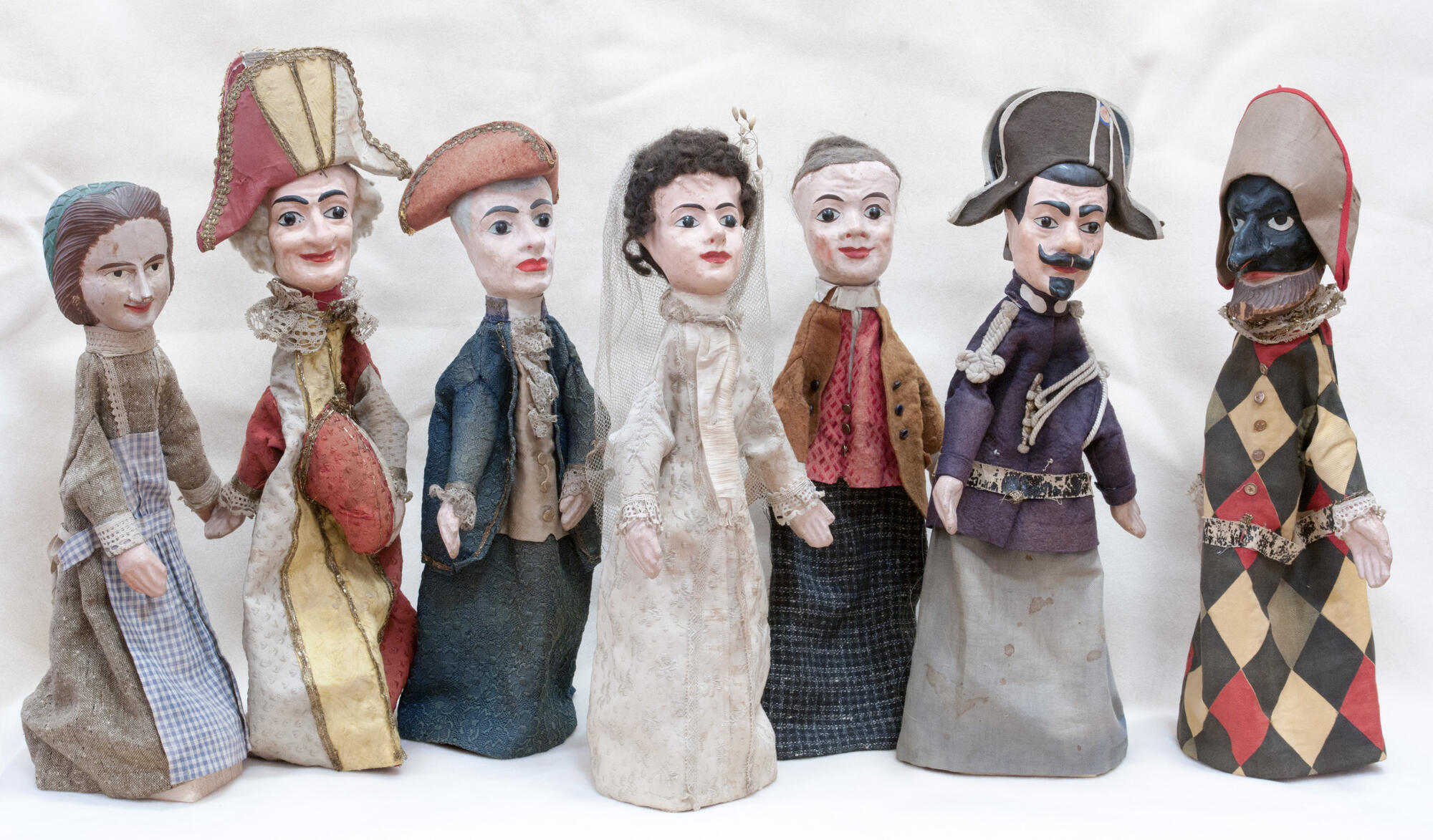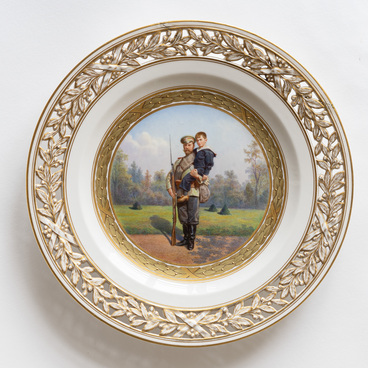The Silver Age craze for children’s home theater was also shared by the tsar’s children. The children’s French theater “Guignol” belonging to Tsesarevich Alexei Nikolaevich was located in the Heir’s playroom, in the Children’s Rooms of the Alexander Palace.
The theater consists of a screen and seven hand puppets representing the characters of the French “Guignol” puppet theater: Harlequin, Corporal, Bride, Polichinelle, Madlon, Officer, and Servant. The heir to the throne may have been presented with this unique children’s puppet theater by one of the royal family members or by foreign officials during a state visit.
Immediately after the departure of the royal family for exile on August 1, 1918, an inventory of the imperial property in the Alexander Palace began. It was carried out by the Art and Historical Commission of the Provisional Government. Among its members were eminent cultural figures led by George Loukomski. Since the end of 1918, the curator of the Palace Museums was Vsevolod Yakovlev. He led the years-long work to create a museum exhibition of the Children’s Rooms. In 1927, the Children’s Rooms were opened to the public.
The exhibition ran until 1931, and after the closure of the Children’s Rooms of the Alexander Palace Museum, the screen and seven puppets of the French theater “Guignol” were transferred to the Art and Pedagogical Museum of Toys in the town of Zagorsk (Sergiev Posad). In 1937, Tsesarevich Alexei’s puppet theater was transferred to the newly created Museum of theatrical puppets. Its founder and first director was Andrei Fedotov.
In November 2011, as part of the “Museum Olympus” award ceremony, the Sergey Obraztsov Puppet Theater Museum handed over the puppet theater of Tsesarevich Alexei to the Tsarskoe Selo State Museum and Heritage Site. This transfer took place thanks to the initiative of Doctor of Philosophy in Art History Goldovsky and Irina Konovalova, and also thanks to the support of the President of the International Association of Puppet Masters Svetlana Pchelnikova.
The theater consists of a screen and seven hand puppets representing the characters of the French “Guignol” puppet theater: Harlequin, Corporal, Bride, Polichinelle, Madlon, Officer, and Servant. The heir to the throne may have been presented with this unique children’s puppet theater by one of the royal family members or by foreign officials during a state visit.
Immediately after the departure of the royal family for exile on August 1, 1918, an inventory of the imperial property in the Alexander Palace began. It was carried out by the Art and Historical Commission of the Provisional Government. Among its members were eminent cultural figures led by George Loukomski. Since the end of 1918, the curator of the Palace Museums was Vsevolod Yakovlev. He led the years-long work to create a museum exhibition of the Children’s Rooms. In 1927, the Children’s Rooms were opened to the public.
The exhibition ran until 1931, and after the closure of the Children’s Rooms of the Alexander Palace Museum, the screen and seven puppets of the French theater “Guignol” were transferred to the Art and Pedagogical Museum of Toys in the town of Zagorsk (Sergiev Posad). In 1937, Tsesarevich Alexei’s puppet theater was transferred to the newly created Museum of theatrical puppets. Its founder and first director was Andrei Fedotov.
In November 2011, as part of the “Museum Olympus” award ceremony, the Sergey Obraztsov Puppet Theater Museum handed over the puppet theater of Tsesarevich Alexei to the Tsarskoe Selo State Museum and Heritage Site. This transfer took place thanks to the initiative of Doctor of Philosophy in Art History Goldovsky and Irina Konovalova, and also thanks to the support of the President of the International Association of Puppet Masters Svetlana Pchelnikova.




